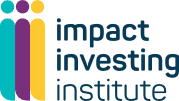
BlueOrchard, a global impact investment manager has used our Just Transition Criteria to develop an investment strategy that aims to improve the resilience of poor and vulnerable households in emerging and frontier markets to weather events and natural disasters.
Fund information
| Manager | BlueOrchard |
| Asset class | Private debt and private equity |
| Target sector | Financial institutions, insurance, and technology |
| Target region(s) | Emerging and frontier markets that are eligible for Official Development Assistance (ODA) |
Alignment with Just Transition Criteria
Criterion 1: there is a product-level commitment to the three Just Transition Elements
In developing the investment strategy, particular effort was made to ensure that it would contribute to the three Just Transition Elements:
- Advancing climate and environmental action.
By supporting climate adaptation through building resilience to climate and weather events via customised climate insurance products, the strategy allows farmers to continue farming even at loss of harvest and to invest in technologies that boost their productivity.
- Improving socio-economic development and equity.
A significant portion of costs associated with climate change are direct results of the lack of insurance, planning, and infrastructure required to cope with damages. The insurance offerings of institutions in scope of the strategy allow farmers to produce higher quality seeds and crop protection, and to keep their children in school during periods of financial stress associated with climate change.
- Increasing community voice.
The strategy increases community voice by reflecting their needs in several ways:
- To promote a just transition and ensure tangible and measurable social impact, the strategy defines the intended beneficiaries in a way that amplifies community voices. This includes defining terms like “poor” and “vulnerable” in nominal terms, such as those having an income of less than USD 3.10 purchasing power parity (PPP) and USD 15.00 PPP a day, respectively. By defining beneficiaries in this way, the strategy aims to prioritise the needs and perspectives of communities most affected by climate change and social inequality.
- The strategy envisages that products offered by investees are customised to the cultural and social contexts as well as to the specific necessities and barriers faced by end-beneficiaries. For instance, the private debt strategy conducted tailored investee and end-client surveys in Pakistan to obtain feedback on the climate insurance products offered to ensure that the insurance products reach their intended impact in their social, geographic, and cultural contexts.
- The strategy identifies the educational needs of end-beneficiaries and conducts financial literacy workshops to raise awareness on the importance of protection from risks, especially climate and weather risks. For instance, for a company in Nigeria, the investment strategy provided resources to identify major entry barriers for end-clients. Based on the findings, the company identified that digitalisation is a key solution to empowering vulnerable communities that face access barriers to climate data and insurance products in real-time. BlueOrchard worked intensively with the company management and Board to upgrade the IT systems and develop a digital platform to address the needs of the targeted community.
Criterion 2: Each investment within the product is assessed to avoid harm to any of the three Element
Specific sustainability and impact due diligence and frameworks (like “B.Impact”) that include proprietary tools such as ESG and Impact ratings will be used to assess all potential investments to identify any significant harm or principal adverse sustainability impacts. By using this framework, BlueOrchard can ensure that its investments do not harm any of the three elements of the Just Transition.
For example, when evaluating a potential investment, BlueOrchard considers the environmental impact of the investment and whether it aligns with the principles of sustainable development. This includes assessing the investment’s carbon footprint, water usage, and waste management practices, among other factors. Similarly, BlueOrchard also evaluates the social impact of its investments, including their potential impact on local communities, labour practices, and human rights.
In addition, Principal Adverse Impact (PAI) indicators are collected as part of the ESG due diligence and monitoring of investees and contribute to the DNSH assessment to ensure that no significant harm (DNSH) on any environmental or social objective is generated from investments.
| In practice: avoiding harm The strategy’s investment universe consists of organisations that have low or medium risk ESG ratings. Investments into “high ESG risk” are possible but require an Impact Committee approval and might entail additional engagement with the investee, or additional monitoring.“ Very high ESG risk” organisations are excluded from the strategy’s investment universe. The approved ESG scorecard is included in the investment memo and submitted to the relevant investment committees in anticipation of a final investment decision. Post-investment, the SPIRIT ESG Scorecard is updated on a regular basis based on information from follow on due diligence visits and ESG questionnaire, along with the overall assessment of financial and social performance of the investee. In cases of ESG underperformance, the Impact Committee is engaged and will decide the course of action. The notion of “do no harm” is at the core of the strategy’s purpose and BlueOrchard closely and actively monitors developments in emerging markets and specific sectors to identify negative industry trends where they arise. |
Criterion 3: Through its investments, the product makes a positive aggregate contribution to all three Elements and, over time, each underlying investment contributes to all three Elements
The strategy assesses each of the investments in line with the selectedkey performance indicators (KPIs) below, which are applied across the approach:
Element 1: Climate & environmental action
- Number of individuals and MSMEs with access to climate and weather insurance products.
- Number of beneficiaries of climate and weather insurance products.
Element 2: Socio-economic distribution & equity
- Number of poor and vulnerable individuals and MSMEs with access to climate and weather insurance products.
- Number of poor and vulnerable beneficiaries of climate and weather insurance products.
Element 3: Community voice
- No indicator is specifically used for assessing the level the strategy contributes to increasing community voice.
- However, the strategy specifically targets underserved communities that did not have access to climate and weather related protection, and part of it is to provide resources to conduct surveys and market feasibility studies to ensure that the voices of end-beneficiaries are heard and reflected in the overall operation of the insurance value chain.
- The strategy’s contribution is monitored holistically through the technical assistance services provided (see examples provided under Criterion 1).
This case study is provided for information only and should not be interpreted as constituting investment advice or any regulated activity. The information and figures provided are accurate as per the latest information publicly available and/or made available to the Impact Investing Institute for the purpose of this research at the time of publication.
